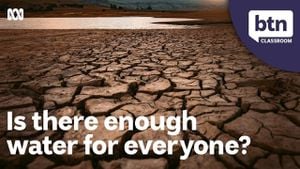Traffic fatalities across the United States have been on the rise, stirring ups concerns among policymakers, safety advocates, and citizens alike. The National Highway Traffic Safety Administration (NHTSA) recently released data indicating alarming increases in road deaths, with over 46,000 lives lost on U.S. streets and highways last year. This marks the highest number since 2005, prompting calls for more stringent traffic regulations and awareness campaigns to curb this disturbing trend.
Experts attribute this surge to several factors, including the aftermath of the COVID-19 pandemic, which saw many people returning to the roads after restrictions were lifted. High-risk driving behaviors, such as speeding and driving under the influence, have become increasingly common. Distracted driving remains one of the major culprits, with smartphones and other devices diverting attention from the road.
According to the NHTSA, the rise isn’t uniform across the country. States like California and Texas are particularly hard-hit, with major cities reporting significant increases. Fatalities among pedestrians and cyclists have surged as well, reflecting urban infrastructure inadequacies. For example, pedestrian deaths reached nearly 8,000 last year, the highest figure recorded. Advocates argue for improved infrastructure, including more pedestrian crossings, bike lanes, and enhanced street lighting to safeguard vulnerable road users.
The spike in fatalities has also sparked debate over the role of law enforcement. Some experts argue for tougher penalties for traffic violations, especially those resulting in fatal accidents. They suggest implementing automatic surveillance systems to catch speeders and other offenders. Others, meanwhile, highlight the need to balance enforcement with community engagement to promote safer driving habits without alienation.
Safety campaigns aiming to minimize reckless driving behaviors are gaining traction. Organizations are partnering with state agencies to educate drivers on the dangers of distracted driving and the importance of adhering to speed limits. Programs targeting young drivers, who are statistically more prone to accidents, are especially emphasized. Strategies include not only educational workshops but also interactive experiences, such as simulated driving scenarios, to cultivate safer practices.
Meanwhile, the insurance industry is responding to the crisis with new policies and incentives aimed at encouraging safe driving behavior. Some insurers are offering discounts for drivers who agree to use apps monitoring their driving habits, promoting safer choices through financial incentives. These innovations reflect the broader need for collaboration among various stakeholders to address the growing concerns related to traffic safety.
Looking forward, many experts stress the need for comprehensive national safety strategies. These initiatives may include promoting the use of public transportation, investing in infrastructure improvements, and increasing governmental funding for road safety projects. They contend it’s not just about reducing fatalities but also about making roads safer for everyone.
The conversation surrounding traffic fatalities also touches on equity issues. Vulnerable communities often bear the brunt of traffic accidents, with higher rates of fatalities among low-income neighborhoods. Many advocates are pushing for targeted interventions to protect these communities, ensuring their voices are heard in discussions about roadway safety. Policies must prioritize these areas to lessen their risk and improve overall traffic safety.
With the start of the new year, the federal government has committed to evaluating and updating its traffic safety guidelines. The Biden administration has emphasized the need for more comprehensive efforts to address the alarming trends. Numerous agencies are expected to collaborate closely, aiming to craft initiatives and policies grounded on data and community needs.
Localities across the country are already experimenting with various strategies to combat rising fatalities. Many cities are implementing Vision Zero initiatives, an approach centered on the belief no loss of life on roadways is acceptable. These programs include redesigning urban infrastructure to be more pedestrian-friendly and implementing lower speed limits.
For those personally affected by traffic fatalities, each statistic reflects heartbreaking loss. Families mourning the loss of loved ones are urging for change, sharing their stories to humanize the statistics. They stress the importance of remembrance and advocacy, pushing for reforms to prevent tragedies from recurring.
Authorities tasked with managing roadway safety are faced with the urgent challenge of reversing this trend. Engaging communities, leveraging technology, and fostering partnerships across sectors may hold the key to making American roads safer. The stakes are high, and the time for decisive action is now.



